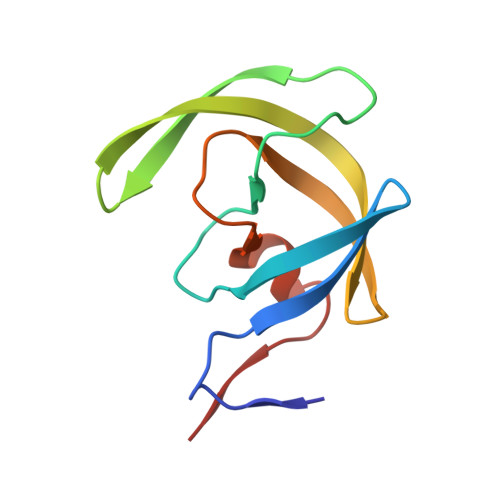Design and Synthesis of HIV-1 Protease Inhibitors Incorporating Oxazolidinones as P2/P2' Ligands in Pseudosymmetric Dipeptide Isosteres.
Reddy, G.S., Ali, A., Nalam, M.N., Anjum, S.G., Cao, H., Nathans, R.S., Schiffer, C.A., Rana, T.M.(2007) J Med Chem 50: 4316-4328
- PubMed: 17696512
- DOI: https://doi.org/10.1021/jm070284z
- Primary Citation of Related Structures:
2Q54, 2Q55, 2Q5K - PubMed Abstract:
A series of novel HIV-1 protease inhibitors based on two pseudosymmetric dipeptide isosteres have been synthesized and evaluated. The inhibitors were designed by incorporating N-phenyloxazolidinone-5-carboxamides into the hydroxyethylene and (hydroxyethyl)hydrazine dipeptide isosteres as P2 and P2' ligands. Compounds with (S)-phenyloxazolidinones attached at a position proximal to the central hydroxyl group showed low nM inhibitory activities against wild-type HIV-1 protease. Selected compounds were further evaluated for their inhibitory activities against a panel of multidrug-resistant protease variants and for their antiviral potencies in MT-4 cells. The crystal structures of lopinavir (LPV) and two new inhibitors containing phenyloxazolidinone-based ligands in complex with wild-type HIV-1 protease have been determined. A comparison of the inhibitor-protease structures with the LPV-protease structure provides valuable insight into the binding mode of the new inhibitors to the protease enzyme. Based on the crystal structures and knowledge of structure-activity relationships, new inhibitors can be designed with enhanced enzyme inhibitory and antiviral potencies.
Organizational Affiliation:
Chemical Biology Program and Department of Biochemistry and Molecular Pharmacology, University of Massachusetts Medical School, Worcester, Massachusetts 01605, USA.

















